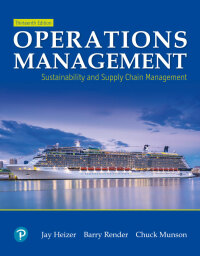4. How do Dardens four supply chains compare with those of other firms, such as Dell or...
Question:
4. How do Darden’s four supply chains compare with those of other firms, such as Dell or an automobile manufacturer? Why do the differences exist, and how are they addressed? Darden Restaurants, owner of popular brands such as Olive Garden and LongHorn Steakhouse, requires unique supply chains to serve more than 300 million meals annually. Darden’s strategy is operations excellence, and Senior VP Jim Lawrence’s task is to ensure competitive advantage via Darden’s supply chains. For a firm with purchases exceeding $1.8 billion, managing the supply chains is a complex and challenging task.
Darden, like other casual dining restaurants, has unique supply chains that reflect its menu options. Darden’s supply chains are rather shallow, often having just one tier of suppliers. But it has four distinct supply chains.
First, “smallware” is a restaurant industry term for items such as linens, dishes, tableware and kitchenware, and silverware.
These are purchased, with Darden taking title as they are received at the Darden Direct Distribution (DDD) warehouse in Orlando, Florida. From this single warehouse, smallware items are shipped via common carrier (trucking companies) to Olive Garden, Bahama Breeze, and Seasons 52 restaurants.
Second, frozen, dry, and canned food products are handled economically by Darden’s 11 distribution centers in North America, which are managed by major U.S. food distributors, such as MBM, Maines, and Sygma. This is Darden’s second supply line.
Third, the fresh food supply chain (not frozen and not canned), where product life is measured in days, includes dairy products, produce, and meat. This supply chain is B2B, where restaurant managers directly place orders with a preselected group of independent suppliers.
Step by Step Answer:

Operations Management: Sustainability And Supply Chain Management
ISBN: 9780135225899,9780135202722
13th Edition
Authors: Jay Heizer; Barry Render; Chuck Munson





